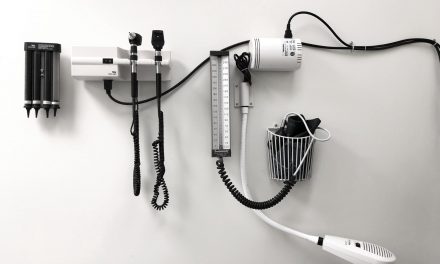Healthcare institutions aim at providing the best medical aid to their patients. Doctors work tirelessly to ensure that medical operations run smoothly. But what happens on the business side of things? Whether it may be a full-fledged hospital or a private practitioner, revenue generation has to be thoroughly monitored.
Better healthcare facilities and services can be provided when there’s an utmost preference for a systematic system of payments. That’s why we have the healthcare revenue cycle management system – to help doctors and other medical institutions have better clarity between payer and provider about expenses involved. In simple words, this system better facilitates the tracking of payments. What else does healthcare revenue cycle management involve? Continue reading our article to know more about what it is and some tips to utilize this system to its potential.

The healthcare revenue cycle management system helps you keep a track of payments as well as your patients’ records.
What Is Healthcare Revenue Cycle Management
We did mention in the introduction that the healthcare revenue cycle management system monitors the tracking of payments. But, it goes beyond that. It also keeps a track of the patient’s health records, insurance policies, date of birth, etc. It becomes like a repository of some sort. The revenue cycle starts when a person schedules an appointment and ends when the provider receives the payment in full for their services. It seems simple enough but it’s a bit longer and slightly complex.
Despite its complexity, many healthcare institutions have adopted this system and distanced it from traditional forms of the revenue cycle. Thanks to technology, that bridge of complexity has become a bit simpler. Gone are the days where there were longer interactions between medical staff, providers, and payers that often result in delayed payments. Healthcare institutions have even included multiple departments in the healthcare revenue cycle management system for better communication, thus making it even more robust.
Since healthcare revenue cycle management is a specialized domain by itself, many healthcare institutions have outsourced their revenue cycle to other companies that have specialized agents in the field. This further leaves little scope for errors and healthcare institutions can dedicate more time and resources to the patient’s treatment instead.
With proper healthcare revenue cycle management, chances of billing errors are slim, and reimbursements from healthcare insurance companies are smoother.
The Steps Involved In The Healthcare Revenue Cycle
The healthcare revenue cycle usually involves 7 steps. These steps are regarded as the cycle’s circulatory system. Any error in any of these steps could result in the disruption of the entire system. Hence, it’s all better to look into each step thoroughly before proceeding to the next one. The last thing you want is not getting paid or receiving delayed payment for services offered.
Pre – Registration
This is the primary step in the revenue cycle as it is beneficial for both the healthcare provider and the patient. This not only eliminates the boring process of filling out forms but also helps the patient to know how much they’re going to pay for their treatment. By receiving an estimated amount, they have peace of mind and when any unexpected surges occur, they can even question the staff. The patient then also has time to look up health care plans or schemes if the bill is expensive.
On the other hand, by giving the amount estimates, one can reduce the chances of bad debts. That’s because the patient has better knowledge of the costs and would be able to pay the bill on time. The patient’s name, age, sex, insurance plans, medical history, and payment mode are included in the pre-registration process. With such a streamlined process, the overall experience of the patient will be more pleasant as well.
Registration
The next step is to validate the patient information given during the pre-registration stage. This further eliminates the chance of any elementary errors such as spelling mistakes, wrong date of birth, etc. If the provider notices any elementary mistakes, they inform the patient immediately before it results in something more complicated. These errors might seem minor but can snowball into a lot of consequences, especially during insurance claims.
Charge Capture
Any charges for services then go across to the insurance provider of the patient for review. This 3rd step in the healthcare revenue cycle management process is integral. That’s because it assures the provider that reimbursement will take place for their services (also known as revenue integrity). If this billing stage happens correctly, then the chances of external audits and payment denials can reduce by a large percent.
Utilization Review
This is the part where the insurance company reviews the request made for medical treatment. They’ll then confirm with the provider if the patient’s healthcare plan covers the requested medical aid or not. Utilization review also helps in cutting down any extra expenditure on the submitted bill, and the patient can even reject the proposal if the treatment is not administered in an appropriate setting.
Medical Coding
The traditional method of describing medical procedures would require huge amounts of paper. For better efficiency, these methods, procedures, services, items used are coded into numeric or alphanumeric decimals into the management system. Creating bills and insurance claims by the management for patients becomes much more of a breeze.
Claim Submission
After coding the medical records into the management system, it goes to the insurance company for reimbursement of services according to the regulations of the contract. If there is an error about the information of the patient, or medical code, the reimbursement process can face a delay. In some cases, it might even be denied. Hence, health care facilities need to have up-to-date information about their patients to avoid any further hassle. A third-party scrubbing system ensures that a claim is clean and updates any patient information from the host system.
Managing Denials
Here, the A/R (Accounts Receivable) team analyses the payment from the insurance company. They check whether the payment was approved or inspect why the payment was denied or delayed. Again, the key reason behind rejecting these claims so easily is not keeping patient records up-to-date. These small errors can result in prolonging reimbursements which will only cause more wastage of time. When there is an error, the claim is sent to the clearinghouse. It is reviewed and rectified before sending it to the payer with the correct amount and information.

Knowing about the healthcare revenue cycle management system will help you make your practice more effective and efficient.
Conclusion
Starting and maintaining a medical practice does need quite a few resources. Healthcare revenue cycle management is quite the process in all. It’s not a strenuous task if you have your patients track records in check, and have error-free coding submissions to insurance companies. If you are a doctor using our ImmunifyMe app, we have a simple revenue management system too. You can manage your daily transactions and store your revenue in an e-wallet which can be easily transferable to your bank account.
FAQs On Healthcare Revenue Cycle Management
What Is Healthcare Revenue Cycle Management?
Healthcare institutions use the revenue cycle management system not only for their billing processes, but also to keep track of the patient’s records including healthcare plans, and medical history.
What Are The Steps Of The Revenue Cycle In Healthcare?
The revenue cycle starts once the person has a scheduled appointment and ends when the payer pays the whole amount for the medical treatment. The steps this system follows are:
- Pre – Registration
- Registration
- Charge Capture
- Utilization Review
- Medical Coding
- Claim Submission
- Managing Denials
Why Is Revenue Cycle Management Important In The Healthcare Industry?
In any business, tracking the revenue you’re collecting from customers is integral to knowing whether you can afford the outgoing expenditure. Similarly, in the healthcare industry, the revenue cycle helps in the billing process and record tracking of patients. It gives a systematic flow so when a patient completes treatment, they already know about the amount they’re going to pay. Plus, it also allows patients to pay their bills on time.






